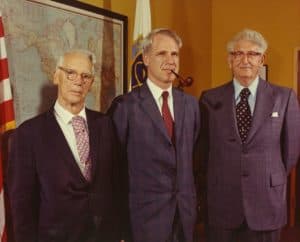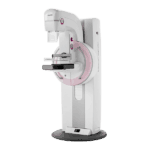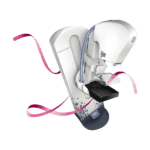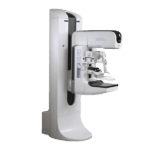Doctor Warren was the first doctor to perform a mammogram

Stafford L. Warren was one of the most significant contributors to radiology during his lifetime. He not only was the first doctor to perform a mammogram, but was also had a hand in turning UCLA into one of the most prestigious medical universities in the country, was a special assistant on mental disabilities to Presidents John F Kennedy and Lyndon B Johnson, and aided the U.S. government in testing of nuclear weapons before speaking out about the dangers of nuclear fallout from weapons testing, which were controversial at the time. However, his strong opinions would eventually be considered, leading up to the Partial Nuclear Test Ban Treaty in 1963.
Born in New Mexico in 1896, Stafford L. Warren attended the University of California, Berkeley, and graduated with his Bachelor of Arts degree in 1918. Heading to the University of California, San Francisco, he graduated with his Doctor of Medicine degree in 1922 and later did post-doctoral work at John Hopkins School of Medicine and Harvard University.
Warren became an Assistant Professor of Medicine at the University of Rochester School of Medicine in 1926. Since the Department of Radiology was brand new at the time, Warren was one of the original group of medical professionals that Dean George Whipple chose to staff the school. By 1930, Warren was an Associate Professor of Medicine. He began to study the work of Albert Salomon, a sociologist from the University of Berlin who produced over 3,000 images of mastectomy specimens and extensively studied the many forms and stages of cancer in the breast. Since Salomon wasn’t keen to recognize the life saving aspects of his discoveries, Warren expanded on his research, using radiology to track changes in breast tissue and developing a stereoscopic technique in which the patient would lie on her side with one arm raised while being X-Rayed. This was a huge breakthrough for breast cancer detection, as it allowed diagnosis of breast cancer to be possible without surgery. Warren subsequently published “A Roentgenologic Study of the Breast” in 1930. Today Warren is cited as the inventor of the mammogram for his breast imaging technique. Each year mammograms are responsible to diagnosing millions of breast cancer cases, effectively saving the lives of women the world over.
Warren, having now tackled a major milestone in his career and developing a new life saving technique, then went on to take on a new project: overseeing the health and safety of thousands during the Manhattan Project. His new role meant being responsible for the safety aspects of the detonation of the Trinity nuclear test in Alamogordo, New Mexico on July 16, 1945. He later handled radiological safety when he led a team of surveyors to Japan, and to the Bikini Atoll in 1946, where more nuclear testing was done. Warren was in charge of assessing the radioactive contamination of the environment and atmosphere, which he was appalled by.
Get Started
Request Pricing Today!
We’re here to help! Simply fill out the form to tell us a bit about your project. We’ll contact you to set up a conversation so we can discuss how we can best meet your needs. Thank you for considering us!
Great support & services
Save time and energy
Peace of mind
Risk reduction
In response to this, in a piece for LIFE magazine in 1947 he wrote, “The development of atomic bombs has presented the world with a variety of formidable scientific, moral and political problems, nearly all of them still unsolved.” He went on to write an in depth analysis of the effects of the bombs, people and environment affected, the time length in which the effects of the bomb lasted, safety measures used during the Bikini expedition in which “a month passed before men could stay on some of the ships for more than an hour”, and “300 men of the safety section lived and worked in the contaminated area to protect some 42,000 other members of the Bikini expedition. Every group which entered the target area was accompanied by a safety monitor who determined how long it could stay.” The men were then bathed carefully when they returned, and if their Geiger counters indicated radioactive contamination they had to be bathed again. “Occasionally when a man had taken off his protective gloves in the ‘hot’ area, the safety section had to dissolve the outer layer of skin from their hands with acid.” Clothes and other materials found too contaminated were sunk into the ocean a mile below the surface, because there was literally “no other way to keep them permanently away from human beings.”
In the article, Warren concluded that atomic weapons can never be prepared for by anyone involved, and that “no defense would have been effective. The only defense against atomic bombs still lies outside the scope of science. It is the prevention of atomic war.”
Warren left his position in 1946, becoming the Chief of the Medical Section of the Atomic Energy Commission, which is a civilian agency that succeeded the Manhattan Project; and later he was awarded the Army Distinguished Service Medal and the Legion of Merit for his contributions to radioactive and atomic weapons safety.
In 1947, Warren was once again at the helm of a brand new medical university, this time UCLA, which had been voted on to establish a medical school for Southern California. He was appointed as the school’s first dean. In 1951 the first students, 28 in total, were enrolled, and there were 15 faculty members. By 1955, when the class graduated, there were 43 faculty members. The UCLA Medical Center officially opened in 1955, and Warren oversaw many milestones and achievements while there, including the addition of schools for Dentistry, Nursing, and Public Health.
Warren not only was responsible for the invention of the mammogram, but for a number of impressive achievements involving radiological safety and education. His invention and teachings continue to save lives every day, and for that he stands as one of the great medical innovators of our time.



